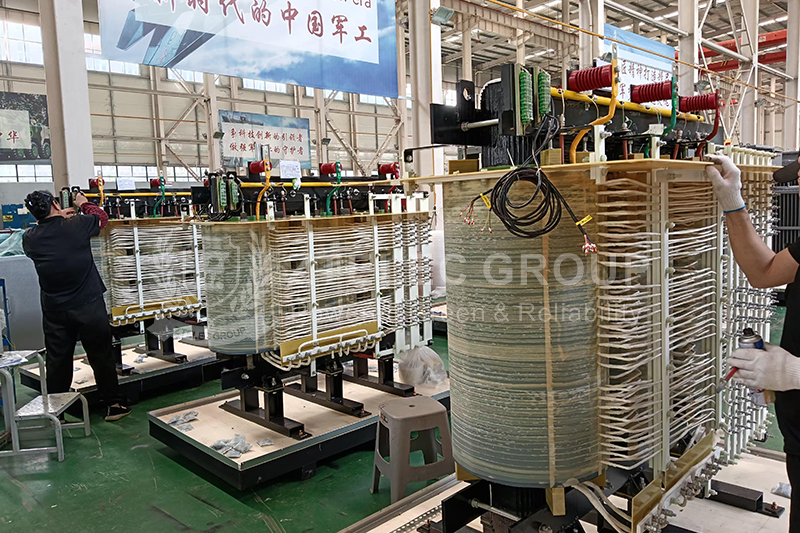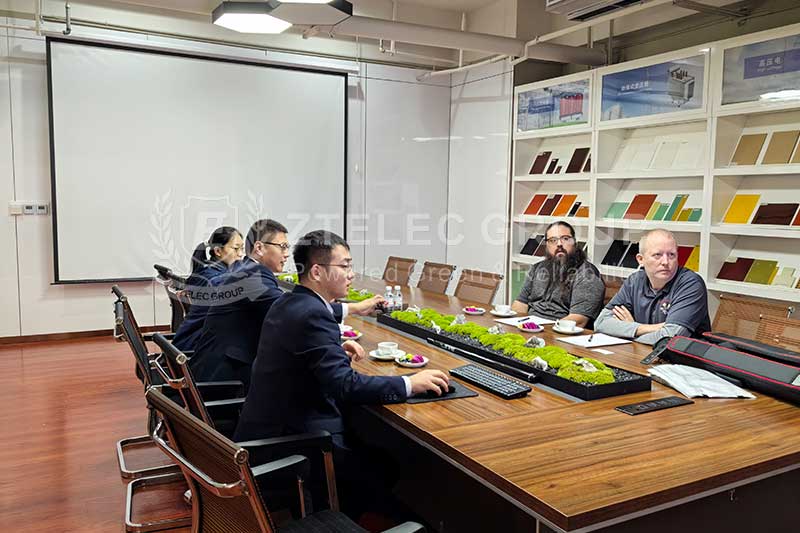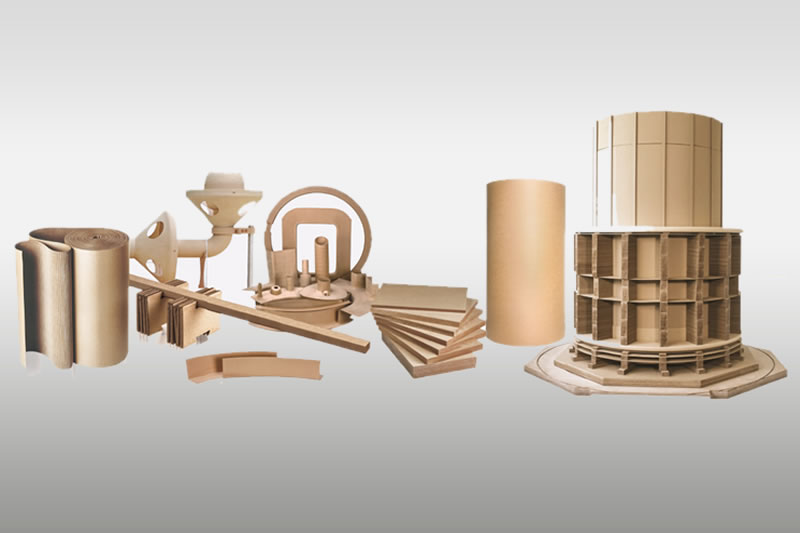Multifunctionality of Dry-Type Rectifier Transformers
Dry-type rectifier transformers are essential components in modern power electronic systems. These transformers go beyond basic voltage conversion, integrating multiple advanced functions such as rectification, voltage regulation, harmonic suppression, filtering, and intelligent control. Their multifunctional design makes them vital for ensuring power supply quality and improving operational efficiency across industrial, transportation, energy, and infrastructure sectors.
Functional Integration
Rectification and Voltage Regulation
By optimizing the winding structure, dry-type rectifier transformers seamlessly integrate rectification and voltage regulation. For instance, in subway traction systems, a double reverse star rectifier circuit with a balanced reactor steps down 35kV AC to 1500V DC. Additionally, a ±15% wide voltage regulation range meets various load demands during train start-up, acceleration, and braking.
Harmonic Suppression and Power Factor Compensation
In the electrolytic aluminum industry, 18-pulse phase-shift rectification significantly reduces grid-side current total harmonic distortion (THD) from 28% (traditional 6-pulse) to just 4.5%. The power factor also improves from 0.85 to 0.98 through six three-phase windings with 20° phase differences on the transformer’s secondary side.
Intelligent Protection and Fault Diagnosis
Advanced monitoring includes built-in PT100 temperature sensors that track winding hot spots in real-time. When the temperature exceeds 160°C, fans activate for forced cooling; at 180°C, the high-voltage power supply is cut off. Furthermore, a high-sensitivity partial discharge monitoring system detects signals above 5pC, offering early warnings to prevent insulation failures.
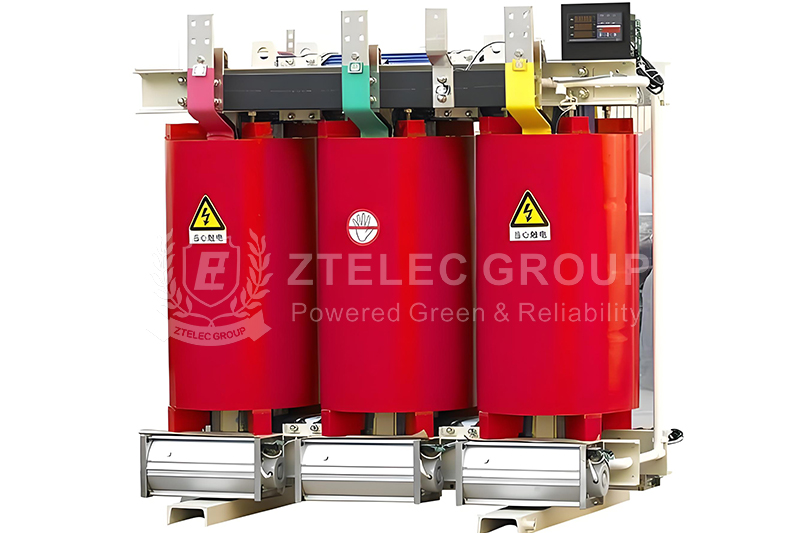
Application Scenario Adaptability
Railway Transportation
In high-speed rail systems, dry-type rectifier transformers manufactured with VPI (Vacuum Pressure Impregnation) processes feature superior short-circuit resistance, environmental durability, and low-noise operation.
Renewable Energy
Transformers used in offshore wind power must endure harsh environments like salt spray and high humidity. H-class insulation (220°C) and triple protective coatings (moisture-proof, mildew-proof, salt-resistant) extend operational life up to 30 years.
Industrial Electrochemistry
For electrolytic copper foil production, dry-type transformers must handle 10kA-level DC currents. With amorphous alloy cores and copper foil windings, efficiency reaches up to 99.2%. Phase-controlled voltage regulation ensures smooth adjustment within 5%-105% of rated voltage, maintaining ±0.1% precision—critical for copper foil thickness consistency.
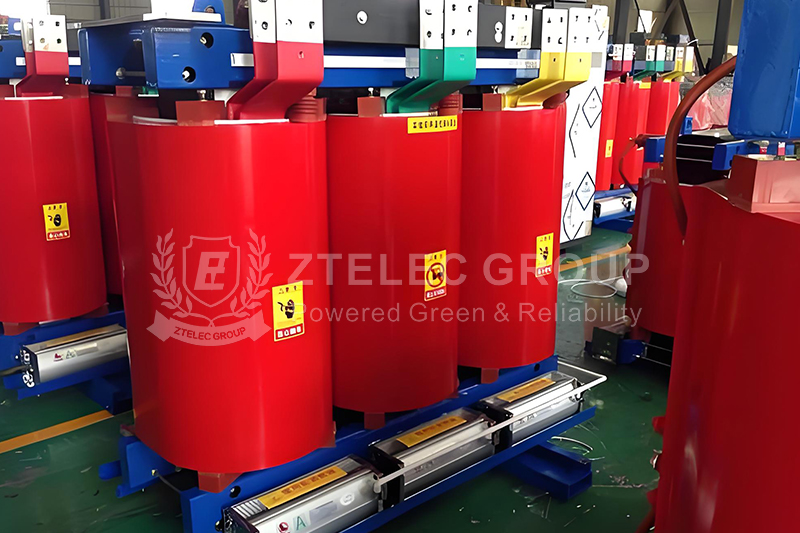
Technological Development Trends
Digital Monitoring and Edge Computing
Next-generation dry-type rectifier transformers integrate edge computing modules to collect real-time voltage, current, temperature, and vibration data. Using 5G for cloud uploads, machine learning models analyze historical data to predict insulation aging, partial discharge, and other potential failures.
New Materials and Advanced Processes
-
Nanocrystalline alloy core: Offers triple magnetic permeability over silicon steel, with 50% lower iron loss—ideal for high-frequency applications.
-
Carbon fiber composite shells: Stronger yet lighter than steel, with electromagnetic shielding properties.
-
3D-printed windings: Enable integrated cooling channels, enhancing local heat dissipation efficiency by 40%.
Modular and Standardized Architecture
Following the IEC 61850 standard, modular design divides the transformer into independent units—body, rectifier, and control system—allowing hot-swappable replacements and scalable system upgrades.
- more+releated article
- 2026-01-04Common Power Transformer Faults: Causes, Solut
- 2025-12-312026 New Year Holiday Notice
- 2025-12-31Operation, Maintenance, and Service Life Manag
- 2025-12-30How to Select a 100 kVA–500 kVA Distribution
- 2025-12-29The Impact of NHN NMN Composite Insulation on
- 2025-12-26Practical Application of GPO-3 Insulation Boar
- 2025-12-2510kV Transformer Replacement Timeline: Install
- 2025-12-25Low Smoke EN45545 GPO3 UPGM203 Laminated Board
- 2025-12-24Merry Christmas — ZTelecgroup Christmas Cele
- 2025-12-24How to Select a Suitable 50kVA–500kVA Distri

